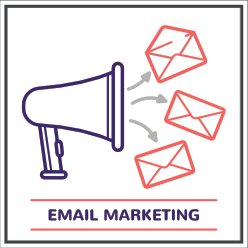B2B mail and compliance failures
- laura
- January 24, 2019
- Best practices
This morning I got an email to a tagged address. The tag matched the company so it’s very likely I did actually sign up. Digging back through my mailbox, I see one previous email to that account – back in 2008.
2008.
One email.
Who knows why I signed up and gave them an email address. Maybe I made a comment on their website. Or perhaps I signed up while investigating something for a client. I certainly don’t know. Given there is one email, I clearly unsubscribed.
If the address hadn’t been tagged, I would have assumed it was just another giant company purchasing addresses and sending out spam. In fact, it’s quite possible that many of the subscribers thought that this was simply spam. One interesting thing, though, is this is primarily B2B mail. It’s very unlikely that their ESPs monitoring saw anything unusual with the mailing. And if they did, it’s possible there’s not enough evidence the customer is violating the AUP.
Monitoring B2B deliverability it a challenge in any situation. Most of the ways ESPs monitor customers delivery don’t work in a B2B context. There aren’t FBLs for business domains. The business user sometimes does have a “this is spam” button and that data is used to tune filters. Sometimes the filters are the individual bayesian filters built into the mail client. Other times, the filters feed back to the filter maintainer and affect the mail coming into the business and other users of the filter. That data isn’t sent by FBL to the sender.
What does this mean? It means that how compliance monitors and identifies spam doesn’t work very well in when their customers are focused on the B2B market. Senders in the B2B space think they don’t have to actually get permission before they send. As compliance we’ve enforced that because their complaints are low. The complaints are low not because people don’t want the mail, but because there’s no way to get complaints from B2B mail.
Lack of negative feedback doesn’t mean the mail is good. It just means there’s no pathway for the feedback. Mail sent to lists of purchased email addresses, or addresses harvested off LinkedIn may not have high complaint rates or high bounce rates. But that doesn’t make the mail good, or wanted.
The remedy for B2B spam is blocking. B2B mailers don’t get the ability to tune their mail based on engagement or other factors like they can with B2C. Send B2B spam, get blocked.

